As an English major a Catholic liberal arts school, I was required to take a semester-long class on John Milton, in which we read the entirety of Paradise Lost as well as its less well known sequel, Paradise Regained. Everyone knows the plot of Paradise Lost: Satan rebels in Heaven! He tempts Adam and Eve and thrusts humanity into sin! Drama! Fireworks! Fallen angels! Fewer people could tell you the plot of Paradise Regained, which is about Jesus being tempted in the desert. Unlike his more bombastic Infernal counterpart, the Miltonian Jesus is a prototypical modern hero: reserved, inwardly-focused, full of doubt. There’s something to be appreciated there, of course, but when it comes to Milton, people gravitate toward Satan for a reason. Which is that he’s cool as hell (pun intended).
I noticed a similar pattern with Dante’s Divine Comedy, another epic poem I studied extensively in undergrad. Everyone knows Inferno, in which sinners are punished relentlessly under the frozen eye of a massive, imprisoned Satan. They do not so much remember Paradiso, or, God help us, Purgatorio, which is the poetry equivalent of sitting in the DMV.
My point is that people like dark stuff. They like capital-e Evil (which should be noted is not the not the same as the far more destructive everyday evil we encounter in our own world). They like jagged, towering castles carved of black stone guarded by swooping, poison-clawed dragons. They like Darth Vader. They like Sauron. They like Hela in Thor: Ragnorak. The reason being that these characters all kick ass.
I too have a soft spot for a dark lord (or lady). But I find that they’re at their most interesting when they’re allowed to be the main character of their own narrative—when it turns out that they are not so dark, after all. Milton was arguably the first to do it, thus creating a long history of sympathizing with the devil. And so I am proud to present to you five books that feature not-so-dark lords—and the stories that make them interesting.
Dark Lord of Derkholm by Diana Wynne Jones
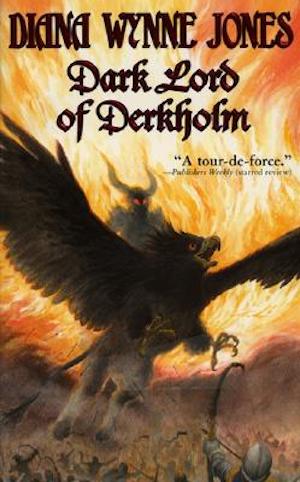
This one’s a classic in the field of not-so-dark-lord literature. Set in a high fantasy world, it features a group that leads tourists through a typical fantasy storyline, with wizard guides, various quests, and so on. Of course there has to be a dark lord, who is chosen more or less at random every year. The Wizard Derk has been given the dubious task of playing the Dark Lord in this go-around, and things start goimng badly from the start, after a dragon mistakes him for a real Dark Lord. It only gets worse from there, although his exploits do give us a delightful parody of the extruded fantasy product of the ‘70s and ‘80s.
The Sundering Duology by Jacqueline Carey
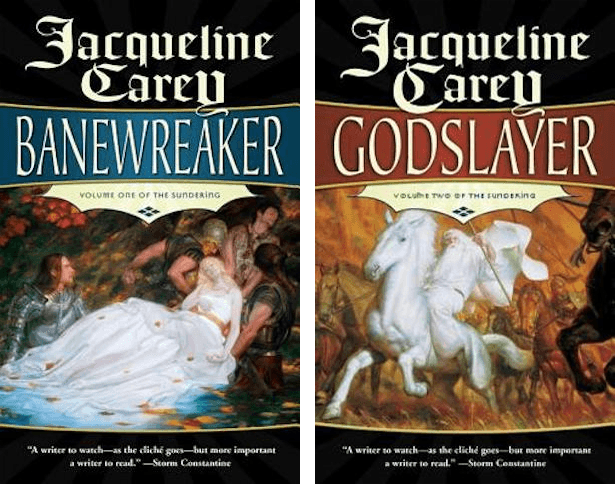
Jacqueline Carey is more well-known for her Kushiel’s Dart books, and while I do enjoy them, I always liked the Sundering a bit more. It takes the Lord of the Rings, files off the serial numbers, and then tells the story from the “dark” side’s perspective: after a war between the gods, Satoris (the not-so-dark lord in question, who, like other misunderstood dark lords we could name, offers a gift to humankind the other gods don’t approve of) flees to the mortal realms, where his key advisor has to deal with stopping a prophecy concerning Satoris’ downfall. It’s a twist on an old favorite, although of course the classifications of “dark” and “light” don’t mean quite as much as they do in the source material, and the familiar story becomes a beautifully-written tragedy, a meditation on the true evil of dividing the world into light and dark, good and not-so-good.
The Last Ringbearer by Kirill Eskov

This book does the same thing that the Sundering duology does, except it doesn’t even bother to file off the serial numbers. It will not surprise you to learn that the book hasn’t been officially published in the US (but it has been translated into English). Like the Sundering, it flips the script on Mordor, with Sauron being presented as a benevolent king keen on ushering in a technological revolution and Gondor being presented as…problematic. It’s all a surprising twist on a narrative we think we know, asking us to consider the concept of (fantasy) history being written by the victors. In this book, the Nazgul are scientists, the One Ring is jewelry, and the elves are racist. While I think the Sundering explores these themes with more eloquence, I could hardly write a list about not-so-dark lords and fail to include the Last Ringbearer.
To Reign in Hell by Steven Brust
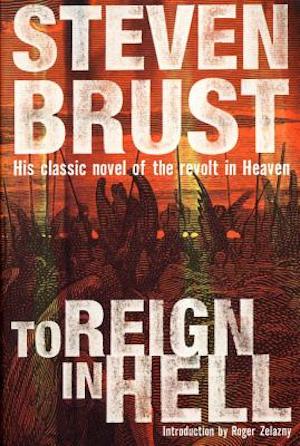
In the first of our Paradise Lost-inspired books on the list, Steven Brust imagines the war between God and Satan as an epic fantasy, with not one but four not-so-dark lords, as he recasts the rulers of Hell from the Ars Goetia (Satan, Lucifer, Belial, and Leviathian) as rulers of the four principalities in Heaven. When Yahweh, who rules over them all, decides to rebuild Heaven, a process that will kill thousands of angels, Satan pushes back, raising ethical concerns,. And thus, a war ensues. Much like the fifth book on our list, To Reign in Hell flips our cultural expectations about who the “good guy” is supposed to be, giving us a dark lord we expect to be good—and a noble hero we expect to be evil.
His Dark Materials by Philip Pullman
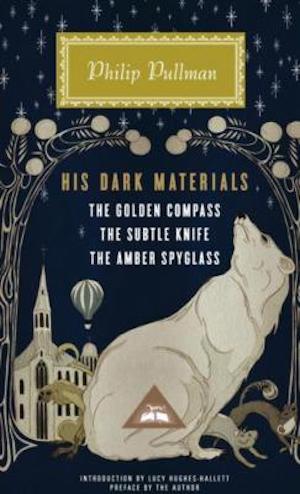
Another Milton-inspired project, His Dark Materials offers a unique twist on this dark lord business. The dark lord in question is in fact a classic dark lord. He’s a cruel, petty tyrant. But here’s the twist—he’s God. The joy of subverting the dark lord trope is that it forces us to reckon with our own understanding of “good” and “evil.” All of the other books on this list do so by presenting the dark lord as a protagonist, and usually as a good guy to some degree. But His Dark Materials does this by taking the ultimate symbol of goodness—Western civilization’s Gandalf, if you will—and thrusts him into the role of the ultimate villain: the Dark Lord.
Cassandra Rose Clarke is the author of Star’s End, Our Lady of the Ice, and The Mad Scientist’s Daughter, as well as several novels for young adults. She holds an M.A. in creative writing from The University of Texas at Austin, and attended Clarion West in 2010. Her work has been nominated for the Philip K. Dick Award, the Romantic Times Reviewers Choice Award, and YALSA’s Best Fiction for Young Adults. You can check out Cassandra’s newest novel, The Beholden, here.










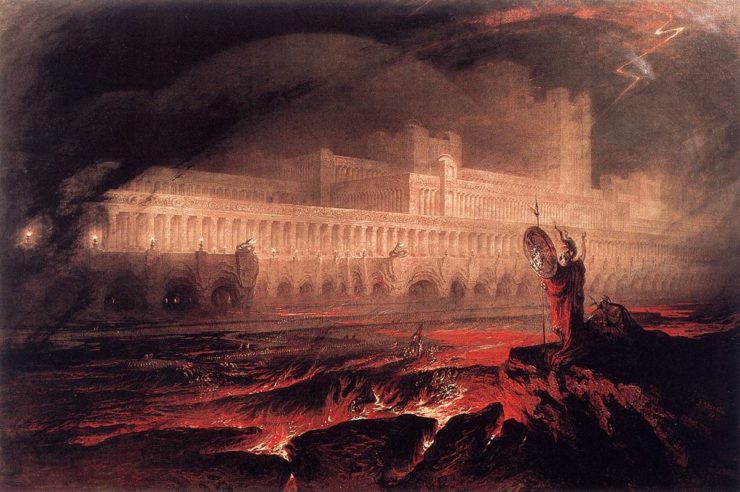
The Botanic Garden scene at the end of His Dark Materials made me homesick for England and I’m not English (well, some of the ancestors were, but they’re interesting for their own sake).
Paradise Lost readers are better readers than I am! My response to the Norton Anthology‘s excerpt that we had to read for British Lit Survey was “Why do we have to slog through this? We know what happened and the original is a lot shorter!”
Black Jewels – Saetan is the good guy.
Also, Scholomance books – “Instead of a Dark Lord, you would have a queen, not dark but beautiful and terrible as the dawn!
Or, instead of a Dark Lord, a Wicked Witch. Really; it would curl your hair, how Wicked she is. — Castle Hangnail, by Ursula Vernon.
Reminds me of Villians By Necessity by Eve Forward. There is no singular dark lord. In fact, it starts out with good having triumphed over the forces of evil. It is more role reversal for the band of adventurers setting out to right the world. It examines what exactly good and evil are.
There’s the Dark Lord Evil Harry in Pratchett’s The Last Hero. Give you an idea of just how difficult it is, working your way up from having The Shed of Doom as your evil headquarters.
Even as we speak the New Stalinism is closing over Russia, while a reign of terror begins in the occupied areas of Ukraine and its air force makes a special point of bombing schools and hospitals. And there is nothing we can do about it because the man who is doing it could destroy all of western civilization in half an hour if he felt like it.
Maybe you should not be so sure there are no real Dark Lords.
Does Havelock Vetinari count?
For those of you who plan to become a Not-So-Dark Overlord yourself, there is some great career advice in the “Evil Overlord List” (google it, there are a few of them out there). For example:
2. My ventilation ducts will be too small to crawl through.
4. Shooting is not too good for my enemies.
56. My Legions of Terror will be trained in basic marksmanship. Any who cannot learn to hit a man-sized target at 10 meters will be used for target practice.
I was very disappointed in His Dark Materials. The first two books set up a range of interesting and sometimes challenging ethical, moral and philosophical problems. But then the third book sidesteps every single one of them by making God an irrelevance in its own story.
As a different take on the idea of making the Good-Evil axis more complex and interesting, I still think that Babylon 5 had some still-unique and interesting in the face-off between the Vorlons and the Shadows.
And I meant to comment (but forgot) about the choice of illustration for this post: John Martin, of the notorious Martin Brothers, being something of a Dark Lord himself, at least in his artistic imagination.
“The most original genius of his age. I see in him… the presence of a spirit which is not of the world, the divine intoxication of a great soul lapped in majestic and unearthly dreams… Vastness is his sphere, yet he has not lost or cirumfused his genius in its space; he has chained and wielded and measured it at his will…”
– Edward Bulwer-Lytton, as quoted in Gary Miller’s Mad Martins.
(The brothers: William, the inventor, “The Lion of Wallsend.” And Jonathan, the arsonist, “The Incendiary of York Minster” who believed that God had told him to take a strong line with the unsatisfactory clergy of that cathedral. In another time and place, he’d have out-Darked any number of Dark Lords; as it was, he died in Bedlam.)
Pullman is a bit of a latecomer; similar ground was covered at novelette length in Ellison’s “The Deathbird”.
@6: read the rest of the paragraph you excerpt. No Dark Lord would make visitors quarantine for a week, or keep them at the other end of a long table, or settle for an oversize dacha instead of a castle. Putin is the monster who shows that evil doesn’t require over-the-top theatricality, or even giant rallies with spotlights.
@7: I would say no; Vetinari works toward everybody getting something, and appears to be getting nothing more out of it himself than the knowledge that the city has lasted another day without going up in flames.
Piers Anthony Incarnations of Immortality where Satan is a key figure who commits one of the most heart-wrenching sacrifices written. And God is so oblivious that he is literally removed from his post.
Dark Lord of Derkholm is one of the rare novels where Dianne Wynne Jones seriously misteps in weighing out dark content for children. I’m pretty sure a few of the top Goodreads reviews mention the scene in question.
Dark Lord of Derkholm is among my daughter’s and my favorites of Diane Wynne Jones’ excellent body of work. We loved seeing fantasy tropes subverted and parodied and it’s just so satisfying (much like its sequel Year of the Griffin). @13–I think people don’t give children enough credit for understanding “dark content”. It’s not like the Grimm Brothers didn’t dole it out in quantity.
My first thought upon seeing this title was Carey’s the Sundering duology. This set of books is a well-kept secret. I don’t know why they are not more popular or talked about. Maybe we’re all just too scared to admit the dark(er) side of ourselves? As a child I loved the villain’s in Disney movies the best. Maleficent, Ursula, the Evil Queen, etc. To me the Sundering is amazing. Don’t get me wrong I do enjoy a ‘good guy’ wins novel; but not all the time. For example; the ending to the movie “Cabin in the Woods” is just brilliant (spoiler alert ahead). So many times I’ve wished a movie ended WITHOUT the good guys winning, or someone sacrificing to save the world; and finally it happened!!
I’m currently reading Marlon James latest installment “Moon Witch, Spider King” and finding that it’s a touch less gruesome than the same story from Tracker’s perspective (it’s also written in broken English, which I could write an essay about why this is the worst choice ever for a 700+ page book…) but yet (so far) I’m a little disappointed as I wanted the vague greyness and morally abject choices of the first book to continue to be prevalent. Instead I feel a lot of sympathy for our leading witch, Sogolon, that I didn’t feel for book 1’s lead, Tracker. Although I do wonder if it’s because she’s a woman, as am I, and so I understand her plights more personally…
All that said, there is a point where it’s too much the bad guys winning and not enough hope is left behind. For a story like this read Sara Douglass second trilogy in the Wayfarer series, starting with Sinner followed by Pilgrim, in which the demons start to really take over and create extreme scenarios for our heroes. I swear that two decades ago this series pushed me into a bout of depression that had been looming (I was in college and just learning that the world is an awful, unfair, unjust place to live in… not the opportunistic, thriving world I’d been told it was as a kid). Essentially real life = Mordor, not the Shire. The worst, and yet best, kept secret of modern (Western) society.
The Lady in Glen Cook’s Black Company – I would say there aren’t really any “good” guys here, though some may see themselves that way.
Dungeon Lord by Hugo Huesca – technically he’s working for the forces of evil.
The Dark Lord’s Handbook by Paul Dale – if nothing else, read it for the quotes from the Handbook
Waldo Rabbit by Nelson Chereta – he’s the last living son of a Dark Lady, too bad his magic is attuned to Light
The Screwtape Letters by C. S. Lewis seems to fit well here—one demon writing to another (his nephew) with advice on how to successfully corrupt his target humans. There’s a lot of moral philosophy thrown in (it wouldn’t be Lewis without it), and it is definitely a book that highlights the easy to miss problems with modern approaches to life (in much the same way as some of the above folks have commented on Tolkien’s Mordor as more representative of the earth around us today.
To Reign in Hell is an all-time favorite of mine.
I have not read The Last Ringbearer, but I’m feeling some uncomfortable real-world resonance. I realize the book long predates the current war, but since my Ukrainian friends routinely refer to the Russian invaders as orcs, this feels like an awkward moment to praise a Russian attempt to rehabilitate Mordor’s reputation and redefine Gondor as evil. That’s exactly what Russia propaganda is doing in real-time right now.
I’m also mildly surprised that the Tolkien estate has not come down on it like a ton of bricks.
I also recommend Son of the Morning by Mark Alder. It posits a Heaven and Hell that are 3 entities, not just 2; a semi-Biblical God (who IIRC is a usurper), a Lucifer who is also kinda Jesus and an anarchist, and a Satan who is Lucifer’s jailer. All three are active to various degrees during the Hundred Years War, including a Luciferian anarchist movement in England.
@@@@@#19
Tolkien estate hasn’t sued them because it’s not copyrighted and not sold. You aren’t stealing anything if you’re not making money on it. It’s why fan fiction can exist.
To Reign in Hell is Brilliant, unfortunately the current cover was obviously selected by an editor who never read the book. The original cover showing Lilith Riding Leviathan into the Climactic battle is much better, at least it comes the book. Pick this one up, leave your assumptions at the door and Steven will blow your mind.